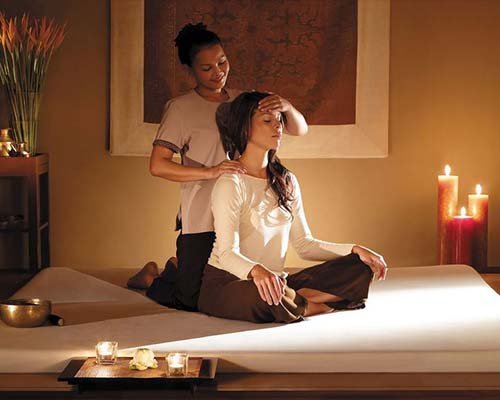Thai massage, also known as Thai yoga massage or traditional Thai massage, is a therapeutic bodywork technique that has its roots in ancient Thailand. Unlike many other forms of massage, Thai massage is performed fully clothed, and it doesn’t involve the use of oils or lotions. Instead, the therapist uses their hands, thumbs, elbows, knees, and feet to apply pressure, stretch, and manipulate the client’s body into various yoga-like poses and stretches. Here are some key characteristics and elements of Thai massage:
- Sen Energy Lines: Thai massage is based on the concept of “sen” energy lines, similar to the principles of traditional Chinese medicine’s meridians. The therapist works along these energy lines to release blockages and restore the body’s energy flow.
- Assisted Yoga Poses: Thai massage incorporates a wide range of stretching and yoga-like movements. The therapist guides the client into different positions, such as bending, twisting, and stretching, to help improve flexibility, range of motion, and overall body alignment.
- Pressure Points: Along with stretching, the therapist applies acupressure and deep compressions to specific points on the body, targeting areas of tension and promoting relaxation.
- Clothing: Clients wear loose-fitting clothing, often provided by the establishment, to allow for ease of movement during the massage.
- Mat-Based: Thai massage is typically performed on a padded mat on the floor rather than on a massage table. This setup allows the therapist to use their body weight effectively in applying pressure and performing stretches.
- Full-Body Treatment: A traditional Thai massage session typically covers the entire body, focusing on the legs, hips, back, shoulders, neck, and head. The therapist may also work on specific problem areas if requested.
- Breathing and Mindfulness: Both the therapist and the client may engage in deep breathing and mindfulness techniques to enhance relaxation and concentration during the session.
Benefits of Thai massage may include:
- Improved Flexibility: The extensive stretching involved in Thai massage can increase flexibility and range of motion.
- Stress Reduction: The combination of physical manipulation and mindfulness techniques can help reduce stress and promote relaxation.
- Pain Relief: Thai massage can relieve muscle tension and discomfort, making it useful for individuals with chronic pain conditions.
- Enhanced Energy Flow: By working on the sen energy lines, Thai massage aims to promote the balanced flow of energy throughout the body.
- Better Posture: Regular Thai massage sessions may contribute to improved posture and body alignment.
Thai massage is often considered invigorating and is sometimes referred to as “lazy yoga” because of the passive stretching involved. It’s essential to communicate your comfort level and any specific concerns or limitations with the therapist, as the intensity of the stretches and pressure can be adjusted to suit individual preferences. Additionally, Thai massage may not be suitable for everyone, particularly those with certain medical conditions, so it’s advisable to consult with a healthcare provider before getting a Thai massage if you have any concerns.



